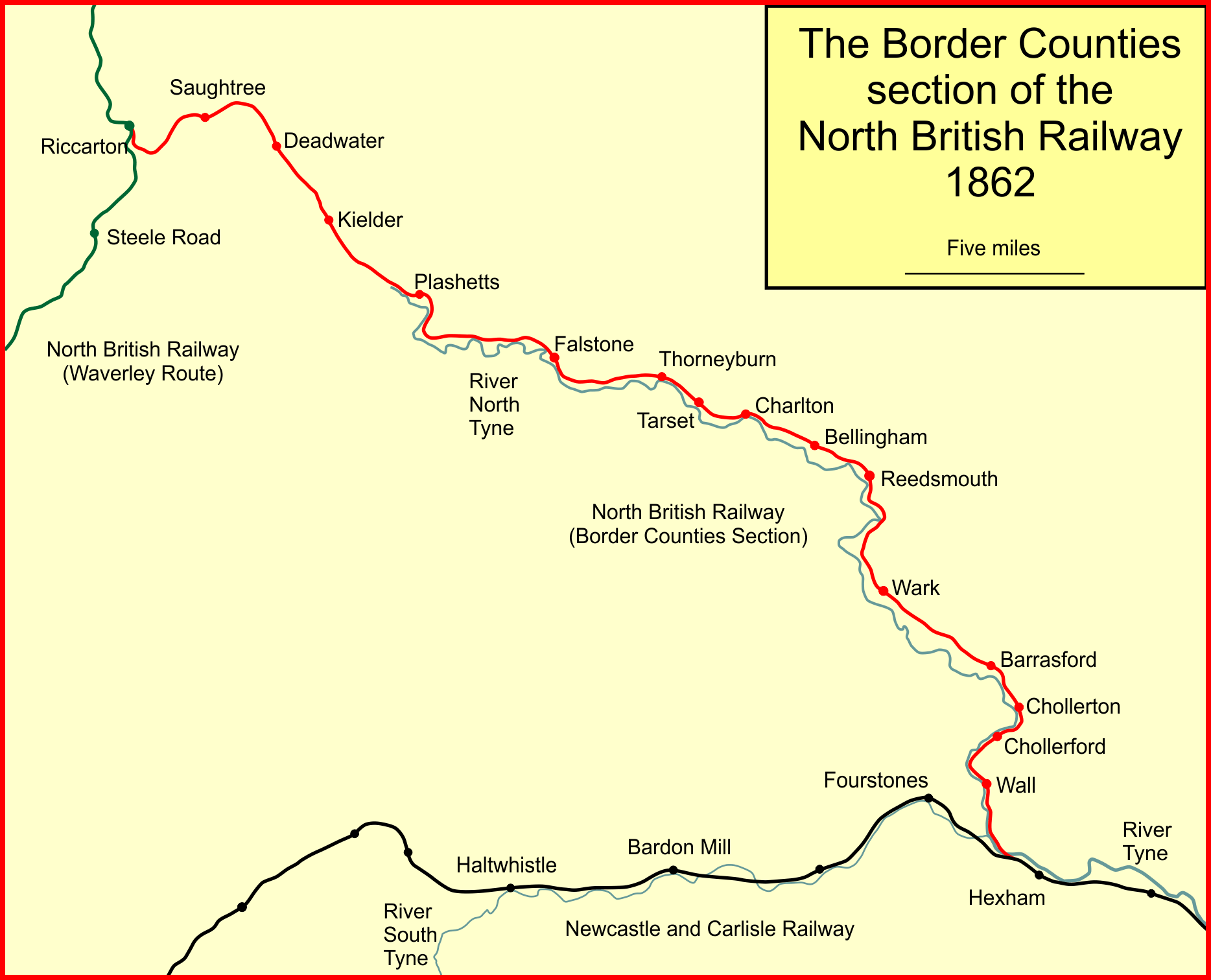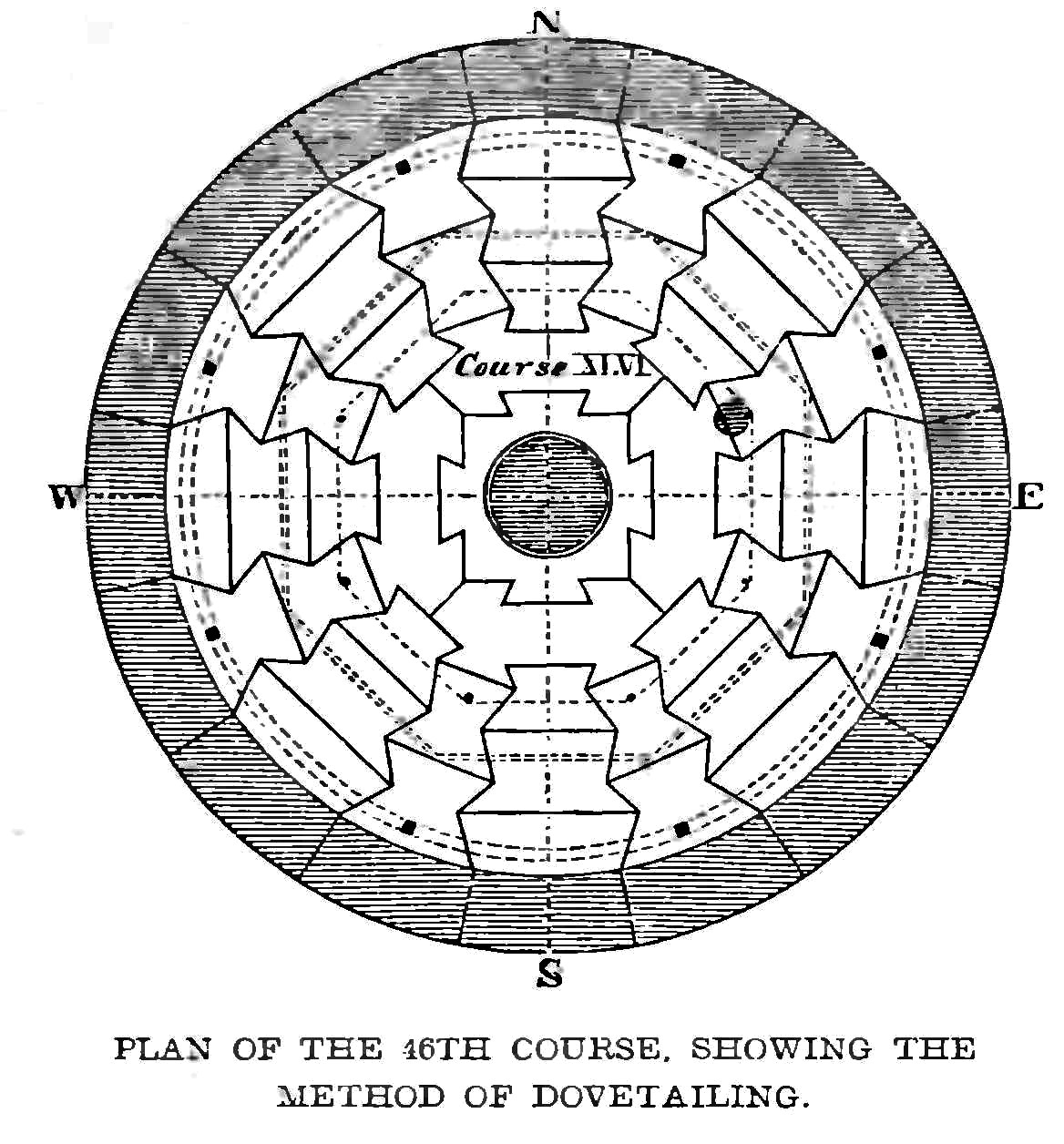|
Hexham Bridge
Hexham Bridge is a road bridge in Northumberland, England linking Hexham with the North Tyne valley. It lies north of the town of Hexham and is the main access to the A69 road, A69 Bypass (road), bypass. History The Tyne was crossed by two ferries called the east and the west boats (Warden Bridge). As a result of persistent agitation, a bridge was started in 1767 and completed in 1770. It was built by Mr Galt and consisted of seven arches. Less than a year later it was swept away in the great Great Flood of 1771, Tyne flood of 1771. In that flood, eight bridges shared the fate of Hexham. In 1774 a new attempt was made to the west by Mr Wooler, an engineer who had been working on the new Newcastle bridge. Piles were sunk to carry the piers but work was abandoned on discovering that the "soil beneath the gravel was a quicksand with no more resistance than chaff". This first bridge, Hexham Old Bridge, was about upstream of the present bridge. The authorities next approached Joh ... [...More Info...] [...Related Items...] OR: [Wikipedia] [Google] [Baidu] |
River Tyne
The River Tyne is a river in North East England. Its length (excluding tributaries) is . It is formed by the North Tyne and the South Tyne, which converge at Warden, Northumberland, Warden near Hexham in Northumberland at a place dubbed 'The Meeting of the Waters'. The Tyne Rivers Trust measure the whole Tyne Drainage basin, catchment as , containing of waterways. Course North Tyne The Ordnance Survey records 'the source of the North Tyne river' at grid reference NY 605974 at Deadwater, a few tens of metres short of the Scottish border. It flows southeast through the village of Kielder before entering first Bakethin Reservoir and then Kielder Water, both set within Kielder Forest. It then passes by the village of Bellingham, Northumberland, Bellingham before the River Rede enters as a left-bank tributary at Redesmouth. It passes Hadrian's Wall near Chollerford before joining the South Tyne near Warden to the northwest of Hexham. South Tyne The South Tyne rises at Tyne ... [...More Info...] [...Related Items...] OR: [Wikipedia] [Google] [Baidu] |
Great Flood Of 1771
The Great Flood of 1771 affected several rivers, including the River Tyne, Tyne, River Tees, Tees, River Wear, Wear and River Eden, Cumbria, Eden and settlements across Northern England from 16 and 17 November 1771. Its cause was a sudden thaw of the ice in upper Teesdale, a cloud burst over the Pennines and a continuous period of rain. At Newcastle upon Tyne the middle arch and two of the arches near the Gateshead side of the Tyne Bridge collapsed in the early hours of November 17. Like many bridges of the time there had been houses and shops on the bridge. Upstream, most of the village of Styford Bridge, Styford on the north bank was destroyed. In total, 25 people died and thirteen or fourteen bridges, including Hexham Bridge, were destroyed on the North, South and main Tyne rivers. On the River Wear in the city of Durham, England, Durham three arches of Elvet Bridge were destroyed, and Prebends Bridge of 1574 was swept away. Further downstream the city's corn mill, Corn Mil ... [...More Info...] [...Related Items...] OR: [Wikipedia] [Google] [Baidu] |
Grade II* Listed Bridges In England
Grade most commonly refers to: * Grading in education, a measurement of a student's performance by educational assessment (e.g. A, pass, etc.) * A designation for students, classes and curricula indicating the number of the year a student has reached in a given educational stage (e.g. first grade, second grade, K–12, etc.) * Grade (slope), the steepness of a slope * Graded voting Grade or grading may also refer to: Music * Grade (music), a formally assessed level of profiency in a musical instrument * Grade (band), punk rock band * Grades (producer), British electronic dance music producer and DJ Science and technology Biology and medicine * Grading (tumors), a measure of the aggressiveness of a tumor in medicine * The Grading of Recommendations Assessment, Development and Evaluation (GRADE) approach * Evolutionary grade, a paraphyletic group of organisms Geology * Graded bedding, a description of the variation in grain size through a bed in a sedimentary rock * Metamorphic ... [...More Info...] [...Related Items...] OR: [Wikipedia] [Google] [Baidu] |
Grade II* Listed Buildings In Northumberland
There are over 20,000 Grade II* listed buildings in England. This page is a list of these buildings in the county of Northumberland. Northumberland See also * :Grade II* listed buildings in Northumberland * Grade I listed buildings in Northumberland Notes References National Heritage List for England External links {{DEFAULTSORT:Grade II listed buildings in Northumberland |
Crossings Of The River Tyne
Crossings may refer to: * ''Crossings'' (Buffy novel), a 2002 original novel based on the U.S. television series ''Buffy the Vampire Slayer'' * Crossings (game), a two-player abstract strategy board game invented by Robert Abbott * ''Crossings'' (Herbie Hancock album), 1972 * ''Crossings'' (journal), an academic journal on art * ''Crossings'' (Red Garland album), 1978 * ''Crossings'' (Steel novel), a 1982 novel by Danielle Steel * ''Crossings'' (Tony Rice album), 1994 * ''Crossings'' (TV miniseries), a 1986 miniseries directed by Karen Arthur, starring Cheryl Ladd and Lee Horsley and * ''Crossings'' (TV series), a Malaysian dark comedy drama series * Pedestrian crossing, a designated point on a road at which some means are employed to assist pedestrians wishing to cross * Zebra crossing, also known as a crosswalk See also * Crossing (other) * The Crossing (other) The Crossing may refer to: Books * The Crossing (play), ''The Crossing'' (play), a 2006 p ... [...More Info...] [...Related Items...] OR: [Wikipedia] [Google] [Baidu] |
Bridges In Northumberland
A bridge is a structure built to span a physical obstacle (such as a body of water, valley, road, or railway) without blocking the path underneath. It is constructed for the purpose of providing passage over the obstacle, which is usually something that is otherwise difficult or impossible to cross. There are many different designs of bridges, each serving a particular purpose and applicable to different situations. Designs of bridges vary depending on factors such as the function of the bridge, the nature of the terrain where the bridge is constructed and anchored, the material used to make it, and the funds available to build it. The earliest bridges were likely made with fallen trees and stepping stones. The Neolithic people built boardwalk bridges across marshland. The Arkadiko Bridge, dating from the 13th century BC, in the Peloponnese is one of the oldest arch bridges in existence and use. Etymology The ''Oxford English Dictionary'' traces the origin of the word ''bridge' ... [...More Info...] [...Related Items...] OR: [Wikipedia] [Google] [Baidu] |
Border Counties Railway
The Border Counties Railway was a railway line connecting in Northumberland, with on the Waverley Route in Roxburghshire. Its promoter had hopes of exploiting mineral resources in the area, and it was taken up by the North British Railway, which hoped to develop it as a through main line between Edinburgh and Newcastle upon Tyne. The railway opened in stages between 1858 and 1862, but the anticipated level of commercial traffic did not materialise, and the sparse population produced very little local passenger traffic. The line closed to passengers in 1956 and completely in 1963. History Linking Central Scotland with England When the Edinburgh and Glasgow Railway was under construction between 1838 and 1842, thoughts turned to the construction of longer distance railways in Scotland, and in particular to connecting central Scotland to the developing English network. For some time it was assumed that only one route was commercially viable, and vast controversy took place over ... [...More Info...] [...Related Items...] OR: [Wikipedia] [Google] [Baidu] |
Border Counties Bridge
Border Counties Bridge was a 19th-century railway bridge across the River Tyne just west of Hexham, Northumberland Northumberland ( ) is a ceremonial counties of England, ceremonial county in North East England, on the Anglo-Scottish border, border with Scotland. It is bordered by the North Sea to the east, Tyne and Wear and County Durham to the south, Cumb ..., England. The bridge used to carry the Border Counties Railway over the River Tyne at Border Counties Junction with the Newcastle and Carlisle Railway. History The Border Counties Railway was authorised by Parliament in 1854. The bridge was part of that railway and linked the Newcastle and Carlisle Railway, near Hexham, with the Border Union Railway at . The first section of the route was opened between and in 1858, the remainder opening in 1862. The bridge was beset with problems from its construction when the temporary wooden structure erected initially to allow a crane access, was swept away by floods. The a ... [...More Info...] [...Related Items...] OR: [Wikipedia] [Google] [Baidu] |
Thropton
Thropton is a hamlet in Northumberland, England, located on the River Coquet, and its tributary Wreigh Burn. With a population of 780 ( 2021 census) it is situated west of the village of Rothbury connected by the B6431 near the junction of the Wreigh Burn and the River Coquet. In the hamlet is a stone bridge over the Wreigh Burn which was built in 1811. Thropton is on the edge of Northumberland National Park, and the surrounding area north and south of the hamlet consists of haughs, and also to the south on the opposite side of the Coquet lies Simonside Hills, a hill range that has many crags dotted along it. Thropton was known in the past as Tattie-toon, a reference to the fertility of the soil in the surrounding area. Amenities The post office closed in approximately 2018, likewise the small village shop in which it was located, and the adjacent vehicle repair garage closed in November 2020 and reopened in 2022. In November 2022 a SPAR opened in Thropton, the shop has a ... [...More Info...] [...Related Items...] OR: [Wikipedia] [Google] [Baidu] |
John Smeaton
John Smeaton (8 June 1724 – 28 October 1792) was an English civil engineer responsible for the design of bridges, canals, harbours and lighthouses. He was also a capable mechanical engineer and an eminent scholar, who introduced various scientific method, scientific methodologies into engineering.Morris, Andrew M.A. (2021). "English engineer John Smeaton's experimental method(s)". Studies in History and Philosophy of Science, 89, 283-294, url=https://doi.org/10.1016/j.shpsa.2021.07.004 Smeaton was the first self-proclaimed "civil engineer", and is often regarded as the "father of civil engineering".Denny, Mark (2007). "Ingenium: Five Machines That Changed the World". p. 34. JHU Press. He pioneered the use of hydraulic lime in concrete, using pebbles and powdered brick as aggregate. Smeaton was associated with the Lunar Society. Law and physics Smeaton was born in Austhorpe, Leeds, England. After studying at Leeds Grammar School he joined his father's law firm, but left t ... [...More Info...] [...Related Items...] OR: [Wikipedia] [Google] [Baidu] |
Warden Bridge
Warden Bridge is a road bridge across the River South Tyne near Warden. History The first road bridge at Warden A warden is a custodian, defender, or guardian. Warden is often used in the sense of a watchman or guardian, as in a prison warden. It can also refer to a chief or head official, as in the Warden of the Mint. ''Warden'' is etymologically ident ... was a suspension bridge built in 1826. It was replaced by a stone arch bridge in 1903. References Bridges in Northumberland Crossings of the River Tyne {{Northumberland-struct-stub ... [...More Info...] [...Related Items...] OR: [Wikipedia] [Google] [Baidu] |





